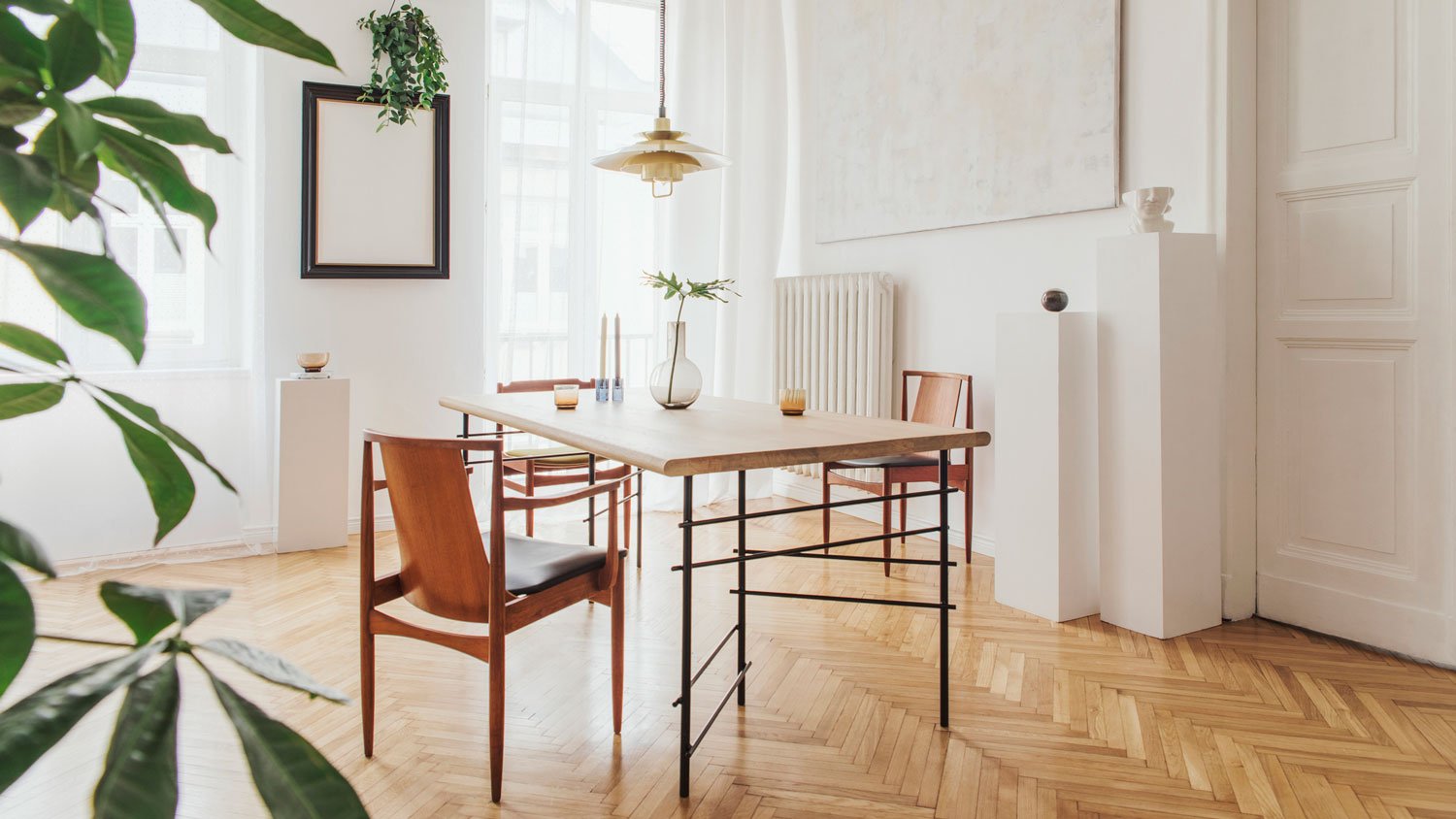Avoid These 7 Common Interior Design Mistakes
Don’t fall for these snafus


When designing the interior of your home, you’re probably going to be making what feels like an endless number of decisions. From deciding whether you want a high or low table to choosing the right wall art, it can be a hefty process.
To avoid expending more effort (and cash!) than necessary, hone your interior design knowledge and learn how to avoid these common mistakes. Remember: At the end of the day, you can always hire a professional interior designer who can provide you with expert tips and tricks.
1. Placing Dark Furniture in Small Spaces
When trying to fill the small spaces in your home—closets, alcoves, mudrooms—you might not be prioritizing your choice for furniture and decor, since larger areas might be more at the focal of your attention. But it’s important to put thought into how you decorate these small spaces, too.
Often, adding dark pieces to an already small space can make the area feel smaller and cramped. Consider going for lighter pieces that will make the space feel more open instead of closed-off and claustrophobic.
2. Using Uniform Furniture Heights
Furniture height may not seem like a big deal when initially planning to design your home—and you might just think picking the same heights for your furniture is the easiest route. Once executed, though, it might look messy or a bit odd.
On the flip side, using a variety of furniture heights tends to make for a more organized and complete aesthetic. Consider planning out proportions before you start purchasing furniture, so you’ll have an idea of what you’re looking for when you go shopping.
3. Not Measuring Areas
Picture it: You found the perfect leather couch for which you’d been searching for months, lugged it all the way home and up a flight of stairs, and then realized it didn’t fit through the door. While it’s easy to fall in love with something your find online or at a local furniture store, resist the urge to impulse buy. Make sure it can actually fit into your space before you press “add to cart” or schedule a delivery.
4. Holding Onto All Items

If we’re being honest, we’ve probably all at one point or another held onto an item for far too long. Maybe your grandfather’s antique coat hanger gives you a sense of nostalgia. Or perhaps you keep your parents’ hand-me-down bookends just to see their delighted reactions each time they visit.
But sometimes you just have to come to terms with the fact that you don’t need certain items anymore. Sure, it’s okay to hold onto some sentimental pieces, but when your home starts to look like a cluttered museum, it might be time to do some tidying and tossing.
5. Getting a Rug That Doesn’t Fit
While you might not realize it until after you’ve made a purchase, the wrong rug can make or break a room.
A common mistake homeowners tend to make is misjudging the right size rug. Although it can work as foot-of-the-bed decor or beside your bathtub, small rugs in large spaces can look messy. For larger spaces, opting for rugs that will fit under several pieces of furniture can help tie the room together.
6. Neglecting Color
Neutral palettes can certainly be appealing—but if you design your entire home without any color, you might find that your spaces feel uninviting or too plain. Even if you’re going for a specific, chic, neutral aesthetic—like Shaker Style interior design—a few color splashes here and there can brighten up areas and add character to your home.
This doesn’t mean you have to add ample color to every room. You can implement subtle color pops with art pieces, decorative throw pillows, or wall accents. As a bonus, comparing swatches and picking your interior paint colors is one of the most fun parts of interior design!
7. Using Inadequate Lighting
You might consider lighting to be the afterthought when designing your home, but your lighting is a key player in setting the ambiance in any space. Have you ever been in a Zoom meeting where the only thing you could focus on was the unflattering yellow light around you? To avoid this plight, look for soft white bulbs and other warm lighting that can help a room feel inviting.
In addition, having enough lighting is a great way to craft a welcoming room. You can do this by utilizing multiple types of lighting such as floor lamps, table lamps, and ceiling fixtures.
Note: If you’re a sucker for different light settings, don’t forget about dimmers. Using dimmers will give you the power to set the lighting and mood based on your mood!

